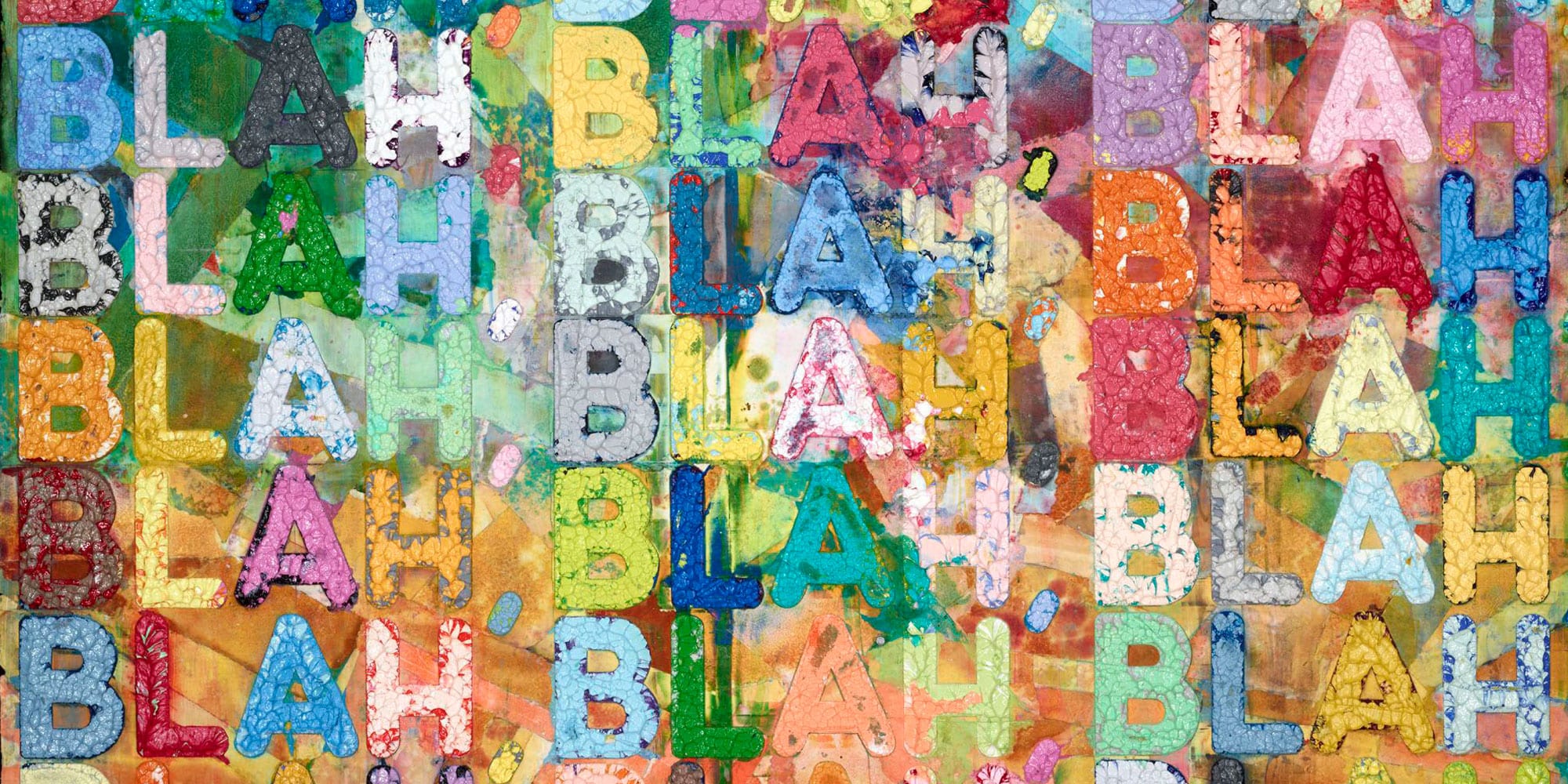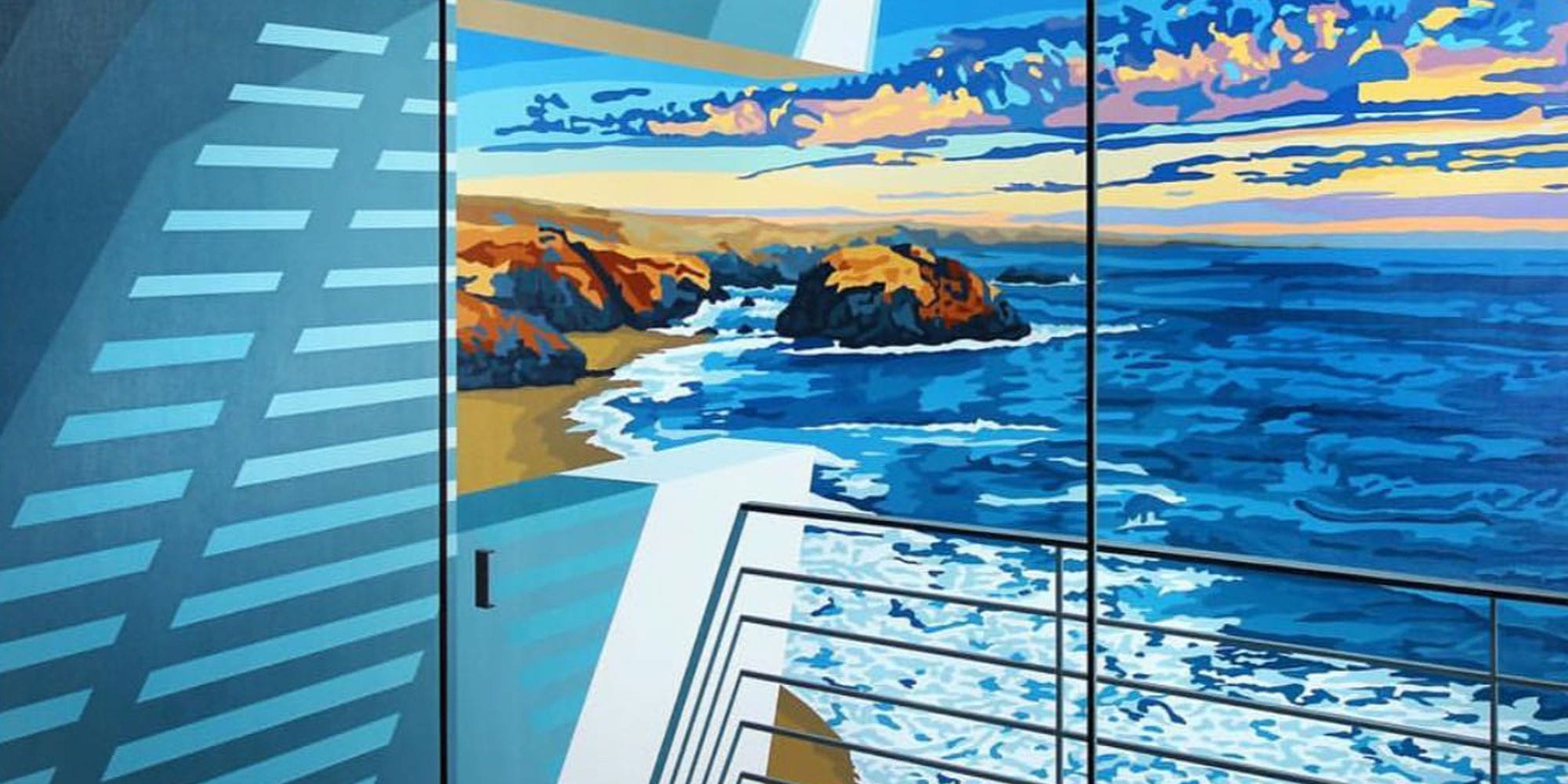Art Dubai spoke to Dubai-based art collector and CEO of Omnicom Media Group MENA, Elie Khouri about the value of art in the work place, the role of Social Media in the growth of the regional art scene and how he started his own collection.
29/10/2018
Art Dubai spoke to Dubai-based art collector and CEO of Omnicom Media Group MENA, Elie Khouri about the value of art in the work place, the role of Social Media in the growth of the regional art scene and how he started his own collection.

Mel Bochner, Blah Blah Blah
You have previously spoken about the importance of art in the workplace and the offices of your company are known to house a first-class art collection. What is the idea behind this?
For some, an art collection is a way to enhance a company’s image. For others, including us, it’s part of a more meaningful approach. Every serious employer will aim to provide staff with a positive and stimulating work environment. An art collection, no matter how small, humanizes the work environment and gives the business a deeper context in the sphere of society and culture.
To achieve that goal, a corporate art collection has to represent the organization that sustains it. In our case, it’s part of our CSR and sustainability program. My office was already decorated with my contemporary artwork, so as my collection expanded, the obvious way to accommodate the new pieces was to showcase them around the building. This, in turn, allowed me to share my love of art with my team.
It’s no coincidence that the “best places to work” often have art collections, since it reflects the importance they place on their employees’ emotional welfare. Studies show that art increases employee efficiency, productivity and creativity. I have to agree. I also believe it helps reduce stress and enhances morale. By exposing everyone to alternative views of the world, art may even deepen our employees’ appreciation of diversity as it encourages discussions and the sharing of opinions. For a creative and service-oriented business like ours, these are significant benefits.
Going further, any public display of a corporate art collection helps build a company’s image and its place in society and the cultural scene. In doing so, it transcends its products or services in its audience’s mind.
What kind of feedback, if any, have you received from your employees?
Our teams embrace it and share it with pride. Whenever a new piece is displayed, I will see it on my teams’ social media pages. Art in the workplace creates another conversation between a business and its stakeholders.

Will Martyr, It Starts With Desire
Can you tell us more about the first piece you bought and how you began building your collection?
My first purchase was a piece by Nabil Nahas. Like a book cover, its title “It’s So Good To See You” drew me to it and I fell under its spell. I simply had to buy it.
I became more serious about collecting in 2010. I was buying art before but very occasionally, usually in charity auctions. Collecting then became a passion and when I travelled I started to include visits to art galleries.
Do you have a favorite piece or artist, and if so, which one?
My favourite piece changes over time. At the moment, it is an iconic piece by a UK-born artist of Ghanaian descent, Lynette Yiadom-Boakye, entitled “Shoot the Desperate, Hug the Needy”. There is movement and flow in the artwork and it shows a great degree of human emotion.
![file-10[1]](https://www.artdubai.ae/wp-content/uploads/2018/10/file-101.jpg)
Thierry Noir, Custom Design On The Wall Of Omnicom Media Group’s Offices
And following on from our previous question, do you enjoy looking at art through the medium of social and digital media or is the original still the real thing?
Checking my Instagram account @eliekhouridxb will quickly demonstrate that I enjoy sharing art in all its forms. It facilitates discovery and research, so while the original piece provides the purest form of appreciation of the creative process, the execution and the aesthetics of the result, social media gets you there.